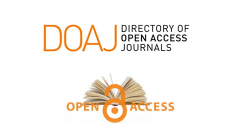Abstract
The method of linear programming (LP) was utilized to determine the relationship between the composition of nutrients of each ingredients, specifications for raw materials, cost and requirements for nutrients of the red tilapia (Oreochromis sp.), in order to define: (1) least cost ration formulation, (2) least cost diet, (3) minimum price of producing a particular diet after meeting a number of requirements. The resulting LP models were solved using the simplex algorithm. Therefore, our results show that, formulated feed had high protein content (31.92 %), Lipid (2.53), Moisture (9.10 %) and Ash (9.00 %). The utilization of diet containing valorized bioresources: (1) 25.00 % of fishmeal from sardine canning industry by-products (Sardina pilchardus) and (2) 01.00 % duckweed (Lemna gibba) meal is economical since it lowers feed costs by 25%, as a result of the most important zootechnical factors will be continuously improved for red tilapia . Furthermore, feed conversion ratio (FCR) for the formulated feed was 1.96 ± 0.25 and the survival rate at the end of experiment cycle was 100 ± 0.00 % . The combination of valorization of bioresources with linear programming technique is therefore a valuable tool that could be used for sustainable aquaculture.
Article History
Received: Jun 27, 2024; Accepted: Sep 16, 2024; Published: Dec 31, 2024
Recommended Citation
Kamel, B.,
Benfares, R.,
Kord, A.,
Milla, T.,
Guenachi, B.,
Frai, L.,
Itcher, R.,
& Kherzane, H.
(2024).
Bioresource Management Via Least Cost Feed Formulation for Red Tilapia (Oreochromis Sp.): Application of Linear Programming Technique,
Journal of Bioresource Management, 11
(4).





